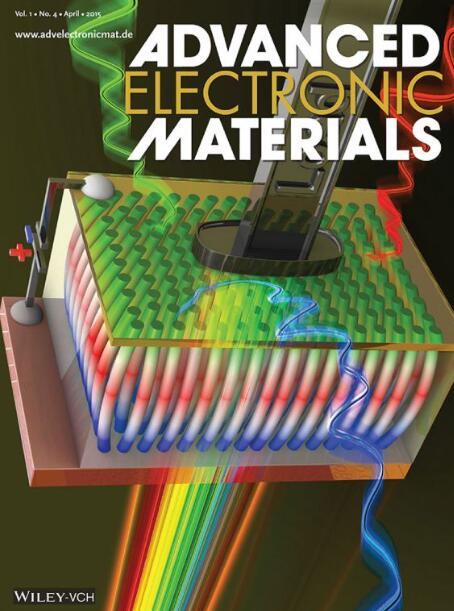Ge N-Channel Ferroelectric FET Memory With Al2O3/AlN Interfacial Layer by Microwave Annealing
IF 5.3
2区 材料科学
Q2 MATERIALS SCIENCE, MULTIDISCIPLINARY
引用次数: 0
Abstract
While n-FeFET memory devices have shown promising characteristics for data storage and neuromorphic computing, implementing such devices with a Ge channel, which is expected to be adopted in advanced technology nodes, has never been reported due to the challenges in achieving desirable Ge interface quality. In this work, ferroelectric HfZrOx (HZO) is integrated with a high-k Al2O3/AlN interfacial layer (IL), along with microwave annealing (MWA), to implement Ge n-FeFET memory devices, and their memory and reliability characteristics, as well as their potential for neuromorphic applications, are extensively explored. A large memory window (MW) of 2.5 V is achieved by applying ±5 V for 5 µs while 3 bits/cell (triple-level cell) operation is demonstrated. By using a recovery scheme, excellent 1-bit/cell (single-level cell) characteristics up to 108 cycles are also obtained. The proposed IL and low thermal budget of MWA alleviate element diffusion and reduce oxygen vacancies, marking the first demonstration of Ge n-FeFET memory devices controlled by dipoles. Furthermore, short-term synaptic plasticity, such as excitatory/inhibitory postsynaptic currents (EPSC/IPSC), which are essential for neuromorphic computing is also achieved. These findings suggest that Ge n-FeFET memory devices could pave the way for high-density embedded memory applications and could further be integrated with existing Ge p-FeFET memory devices to form Ge-based FeCMOS, enabling more versatile circuit functionalities.

微波退火制备具有Al2O3/AlN界面层的Ge n通道铁电场效应晶体管存储器
虽然n-FeFET存储器件在数据存储和神经形态计算方面表现出了很好的特性,但由于在实现理想的Ge接口质量方面存在挑战,因此使用Ge通道实现这种器件有望在先进技术节点中采用,从未有过报道。在这项工作中,铁电HfZrOx (HZO)与高k Al2O3/AlN界面层(IL)以及微波退火(MWA)集成在一起,实现了Ge n-FeFET存储器件,并广泛探索了它们的存储和可靠性特性,以及它们在神经形态应用中的潜力。通过施加±5 V电压5µs,实现了2.5 V的大存储窗口(MW),同时演示了3位/单元(三电平单元)操作。通过使用恢复方案,还获得了高达108个周期的优秀的1比特/单元(单电平单元)特性。所提出的IL和MWA的低热收支减轻了元素扩散和减少氧空位,标志着由偶极子控制的Ge n-FeFET存储器件的首次演示。此外,短期突触可塑性,如兴奋性/抑制性突触后电流(EPSC/IPSC),这是神经形态计算所必需的。这些发现表明,Ge n-FeFET存储器件可以为高密度嵌入式存储器应用铺平道路,并且可以进一步与现有的Ge p-FeFET存储器件集成,形成基于Ge的FeCMOS,实现更多功能的电路功能。
本文章由计算机程序翻译,如有差异,请以英文原文为准。
求助全文
约1分钟内获得全文
求助全文
来源期刊

Advanced Electronic Materials
NANOSCIENCE & NANOTECHNOLOGYMATERIALS SCIE-MATERIALS SCIENCE, MULTIDISCIPLINARY
CiteScore
11.00
自引率
3.20%
发文量
433
期刊介绍:
Advanced Electronic Materials is an interdisciplinary forum for peer-reviewed, high-quality, high-impact research in the fields of materials science, physics, and engineering of electronic and magnetic materials. It includes research on physics and physical properties of electronic and magnetic materials, spintronics, electronics, device physics and engineering, micro- and nano-electromechanical systems, and organic electronics, in addition to fundamental research.
 求助内容:
求助内容: 应助结果提醒方式:
应助结果提醒方式:


